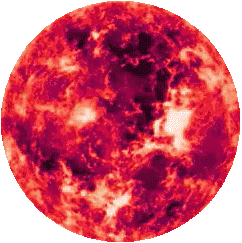
Ross 128 Star System
The Ross 128 Star System contains 1 Star and 1 Planet.
1 Planet is a habitable planet candidate, planet Ross 128 I
The GJ 1002 Star System is located within near the inner rim of the Orion Arm, within the Local Fluff of the Local Bubble, between the Radcliffe wave and Split linear structures (formerly Gould Belt) in the Milky Way Galaxy, which is 26,000 light years away from the massive Sagittarius black hole at the center of the Galaxy.
/ Star & Planets / Stars & Planets List 0 to 20 Light Years / Ross 128 Star System
64.192 Trillion Miles
10.9190 Light Years
3.3477 Parsecs
Ross 128

M4V Class Red Dwarf
5,264 F Photosphere
Population II Star
Heavy Metal Poor
Main Sequence
9.45 Billion Years Old
Moderate Flares
1 AU = 92,955,807 Miles
Chemical Rocket Travel Time
109,190 Earth Years
Fission Rocket Travel Time
219.69 Earth Years
Fusion Rocket Travel Time
109.84 Earth Years
Laser Light Sail Travel Time
54.92 Earth Years
Ross 128 Planets Probability to Host Life
Ross 128 I (Kontos): The chance of life on Ross 128 I is currently unknown, but it has a moderate possibility as it's a rocky planet orbiting within its star's temperate zone, which could allow for liquid water. However, there are significant challenges to life, including the potential for a water-losing tidal lock and the need for a substantial atmosphere to regulate its temperature, which is not yet confirmed.


Planet Ross 128 I is an interesting Earth-like planet candidate since its parent star produces moderate flares, when most Red Dwarf stars produce extreme flares. This is good news for Ross 128 I having an atmosphere, as well as the fact that this planet is larger than Earth, potentially allowing it to hold on to an atmosphere. However, it also means that it might have a much thicker atmosphere that traps more heat. We need to discover exactly what type of atmosphere it may have, to be able to determine whether it has the possibility of being habitable.